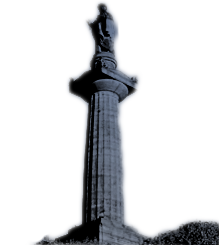Robert Stewart (1810-1866)
by Colin Campbell
He was born in 1810 to William Stewart and Helen Miller.
After training in Accountancy, he took over his father’s mineral business at Cleland in Lanarkshire.
He became a Councillor in Glasgow in 1842 and held several posts before becoming Lord Provost from 1851-1854.
Inspired by the 1848 Public Health Act, the City in 1852, under Stewart’s leadership, purchased 66 acres of land to the west of the City which was to become Kelvingrove Park. He brought Sir Joseph Paxton to Glasgow to commence design the layout of this park (completed by Charles Wilson and Thomas Kyle) and Queen’s Park on the south side of the City (completed by John Carrick).
His other great contribution to the City was the passing of the Water Act through Parliament in July 1855 under which authority a public fresh water supply was brought to the City from Loch Katrine 35 miles away. He was assisted in this by his friendship with the then Prime Minister Lord Palmerston and was accomplished in the teeth of particularly fierce local opposition. Work commenced in 1855, was completed by 1859 and was opened at Loch Katrine by Queen Victoria. The Chief Engineer was John Frederick Bateman.
During his tenure of office as Lord Provost, he married Isabella King of Leverholme, Renfrewshire on 29th June 1852, they were to have a daughter and two sons.
Robert retired from the Council in 1855 and bought the estate of Murdostoun near Shotts in Lanarkshire in 1856. He died on 12th September 1866.
In 1872 a Memorial Fountain to him was erected in Kelvingrove Park.
(Ack: One Hundred Glasgow Men (image), Glasgow City Council, ScotlandsPeople, NLS Maps)











